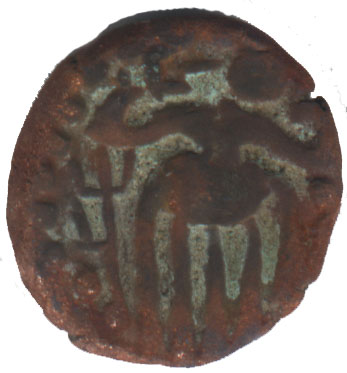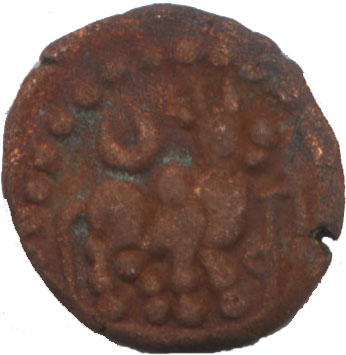


| 
|
This coin is an exception since the obverse depicts the standing man but the reverse depicts a standing bull instead of a seated man. On the reverse, only the va can be deciphered with a medial vowel sign. The vowel could be either i or ī. Checking the names of the kings starting either the consonant va, there were six Vijayabāhus and five Vikramabāhus (with Sēnāsammata Vikramabāhu who minted coins according to Rajavaliya1) two Vīrabāhus reigned from Poḷonnaruva Period. All the other kings except Virabahu II were from the clans that ruled Lanka for centuries but Vīrabāhu II was from the Alakēśvara clan.
The first Vīrabāhu was the son of King Niśśaṅkamalla (1187-96 CE) who was killed on the day of his consecration. The second Vīrabāhu was the first Alakēśvara to become a king in Lanka. His name is mentioned in the Sagama inscription.2 It says the two Alakēśvara defended Lanka which indicates from a South Indian invasion. The two brothers were Vīra Alakēśvara and Vīrabāhu.
The Kitsirimevan Kälaṇi inscription3 says that vihāra was maintained continuously for ten generations by the descendants of the minister Alakēśvara who hailed from Vanchi4 [Kanchi of South India]. Sagama inscription further says the Alakēśvaras were descending from the clan who brought the sacred Bodhi tree to Lanka. That indicates the Alakēśvaras were descending from a prince who had gone to Kanchi perhaps several centuries back. As a result, the Alakēśvaras did not have a proper right to become kings of Lanka. However, that period experienced several South Indian invasions and the defendants of Lanka were the Alakēśvaras. As a result, they had the necessary power to ascend the throne of Lanka. Vīrabāhu was the brother-in-law of the former king Bhuvanekabāhu V, but Vīra Alakēśvara was the elder brother. Due to his connections, Vīrabāhu defeated Vīra Alakēśvara and became king.
Accordingly, it is clear the lineage of Vīrabāhu was different from other kings and also unique. This could be the reason the bull has replaced the sitting man on the coin. Due to the same reason, it is very likely the coin with the letter vi or vī was issued by Vīrabāhu II.